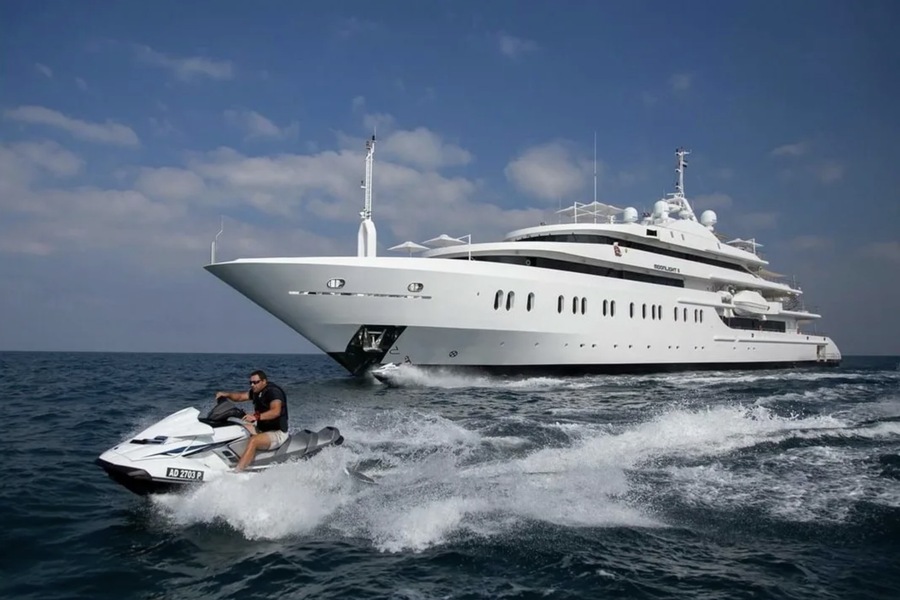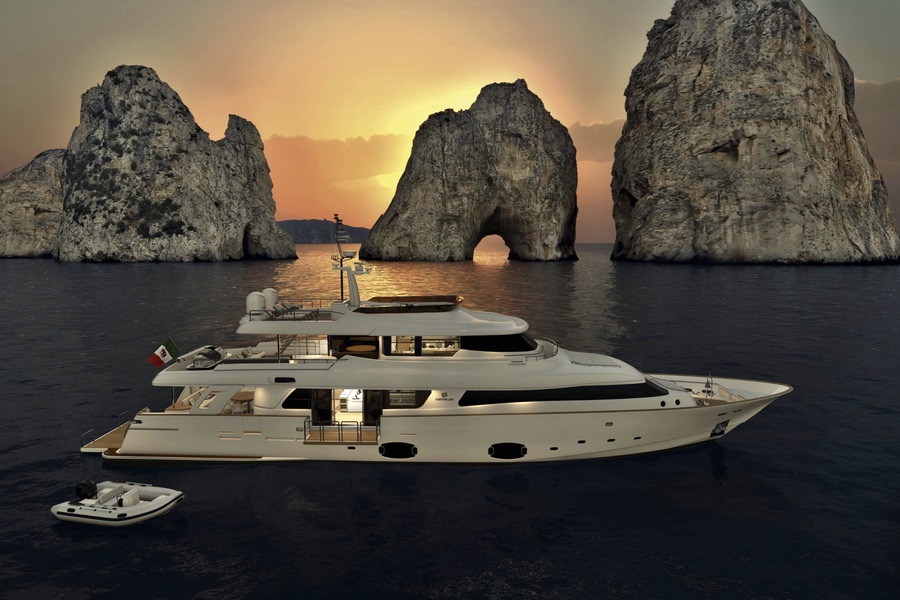Oman, the oldest state in the Arab world, holds a distinguished place in the history of the Arabian Peninsula. Nestled on the southeastern coast, this remarkable nation borders Saudi Arabia, the United Arab Emirates, and Yemen, and is kissed by the waters of both the Arabian Sea and the Gulf of Oman. Its geographic position has not only made it a hub for ancient maritime routes but also a desirable destination for modern travelers. One of the most scenic ways to explore Oman’s coastline is by rent a yacht in Dubai, which offers a luxurious journey across the Gulf of Oman.
Half a century ago, Sultan Qaboos bin Said led Oman through a transformational period, breaking away from the isolationist policies of the past and embarking on a journey of modernization. However, unlike many of its Gulf neighbors, Oman did not become a land of skyscrapers and glass towers. Instead, it retained its rich cultural identity and preserved its heritage in the form of traditional architecture, forts, and ancient sites. Modernization in Oman has been carefully balanced with tradition, and this unique blend of old and new has made the sultanate a fascinating destination for travelers.
Oman’s landscapes range from the golden dunes of the Wahiba Desert to the rugged mountains of WadiGhul, often called the Grand Canyon of Oman. The country’s stunning natural beauty is complemented by its exotic culture, including the aroma of frankincense, the bustling atmosphere of traditional souks, and the quiet serenity of its numerous mosques and palaces. With excellent infrastructure, including smooth highways running through the desert, Oman is easily accessible and offers a world of adventure for visitors.
Muscat: The Cultural Heart of Oman
Muscat, the capital of Oman, is an extraordinary city that stretches along 60 kilometers of coastline, sandwiched between the sea and rugged mountains. Unlike many modern cities, Muscat has retained much of its traditional charm, while still providing all the amenities and services that tourists could desire. The city’s old quarters, picturesque forts, and bustling promenades are filled with a sense of history and a deep cultural richness. Here are the must-see sites in Muscat:
1. Sultan Qaboos Grand Mosque
The Sultan Qaboos Grand Mosque is one of the most iconic landmarks in Muscat. Completed in 2001, it was a gift from Sultan Qaboos to the nation and serves as a symbol of Oman’s commitment to its Islamic roots and architectural excellence. The mosque is a stunning example of contemporary Islamic architecture, with its towering minaret, beautifully carved marble walls, and a massive handwoven Persian carpet—the second largest in the world. Open to non-Muslim visitors, it offers a peaceful space for contemplation, as well as insight into Omani culture and religion.
The mosque’s prayer hall can accommodate up to 20,000 worshippers, and the intricate details of the structure, from the chandeliers to the mosaics, make it a must-visit site in Muscat. Visitors should note that there is a modest dress code to be observed when entering the mosque.
2. Al Alam Palace – The Sultan’s Palace
Situated on the coast and flanked by the Al Jalali and Al Mirani Forts, the Al Alam Palace is the ceremonial palace of Sultan Qaboos. The palace’s striking exterior, with its blue and gold mosaic columns, gives it a unique and elegant look. Although the palace is not open to the public, visitors can admire its stunning architecture from the outside and take in the surrounding views of Muscat Bay.
The Al Jalali and Al Mirani Forts, built by the Portuguese in the 16th century, once served as the guardians of Muscat’s harbor. Today, these forts stand as a reminder of Oman’s turbulent past, although they are still military installations and closed to the public. Their towering presence above the cliffs offers excellent photo opportunities.
3. National Museum of Oman
Located near the Sultan’s Palace, the National Museum of Oman is a window into the country’s history, culture, and traditions. Opened in 2016, the museum showcases a range of exhibits, from ancient archaeological finds to Omani maritime history and contemporary art. The museum’s galleries cover themes such as Oman’s prehistory, its early Islamic period, and the modern Omani Renaissance. Visitors can explore the country’s rich heritage through interactive displays, historical artifacts, and educational presentations. The museum is a perfect introduction to Oman’s multifaceted culture and history.
4. Mutrah Corniche
The Mutrah Corniche is one of the most vibrant areas of Muscat, offering stunning views of the sea, the city’s old harbor, and the surrounding mountains. This beautiful promenade is lined with traditional buildings, lively souks, and numerous cafes where visitors can relax and enjoy the scenery. The Mutrah Souk, one of the oldest in the Arab world, is a bustling marketplace where you can buy traditional Omani goods, such as silver jewelry, incense, textiles, and spices. The corniche is a favorite spot for both locals and tourists, offering a leisurely stroll along the waterfront, particularly at sunset when the city is bathed in golden light.

Beyond Muscat: Exploring Oman’s Natural and Cultural Wonders
While Muscat provides a wonderful glimpse into Omani culture, the country’s true allure lies in its vast landscapes and diverse regions, each offering a different experience. Here are some of the must-visit destinations outside the capital:
1. WadiShab
WadiShab is one of Oman’s most breathtaking natural attractions. This stunning gorge, located about 90 minutes from Muscat, offers an unforgettable adventure for nature lovers. Visitors can hike through the canyon, crossing shallow streams and clambering over rocks before reaching crystal-clear pools of water perfect for swimming. Hidden within the wadi is a waterfall concealed in a cave, accessible by swimming through a narrow gap in the rocks. The combination of towering cliffs, turquoise waters, and lush greenery creates a magical oasis in the heart of the desert.
2. Wahiba Sands
The Wahiba Sands, also known as the Sharqiya Sands, is a vast desert expanse of rolling sand dunes that stretch as far as the eye can see. This golden desert is home to the nomadic Bedouin tribes, and visitors can experience their traditional way of life by staying at one of the many desert camps. Activities in the desert include dune-bashing, camel riding, and sandboarding, while nights are spent under the stars around a campfire. The Wahiba Sands offers a quintessential Arabian desert experience and an opportunity to connect with Oman’s ancient nomadic culture.
3. Salalah
Salalah, located in the southern region of Oman, offers a striking contrast to the arid deserts of the north. During the Khareef (monsoon) season, from June to September, Salalah transforms into a green paradise, with lush vegetation, flowing waterfalls, and cooler temperatures. The region is famous for its frankincense trees, and visitors can explore the Land of Frankincense UNESCO World Heritage Site to learn about the ancient trade routes that once made this area prosperous. Salalah’s beaches, historical ruins, and natural beauty make it a unique destination within Oman.
4. WadiGhul – The Grand Canyon of Oman
Often referred to as the Grand Canyon of Oman, WadiGhul is a dramatic gorge that cuts through the rugged mountains of the Hajar range. Visitors can hike along the rim of the canyon, which offers spectacular views of the surrounding landscape, or drive up to the viewpoint known as Jebel Shams, the highest peak in Oman. The canyon is home to small villages and ancient terraces that cling to the mountainside, offering a glimpse into the traditional ways of life in these remote areas.
5. Nizwa
Located about 140 kilometers from Muscat, Nizwa is one of Oman’s most historically significant cities. Once the capital of Oman, Nizwa is home to the Nizwa Fort, a 17th-century fortress that played a key role in defending the city against invaders. The fort’s massive circular tower offers panoramic views of the surrounding date palm groves and mountains. Nizwa is also famous for its souks, where visitors can buy traditional Omani goods such as silverware, pottery, and dates. The city’s rich history and vibrant culture make it a must-visit destination for travelers.
6. Ras Al Jinz – Turtle Reserve
Ras Al Jinz, located on the easternmost tip of Oman, is a sanctuary for the endangered green sea turtle. Every year, thousands of turtles come ashore at Ras Al Jinz to lay their eggs on the sandy beaches. Visitors can take guided tours to witness the turtles nesting or watch the hatchlings make their way to the sea. The experience is both humbling and awe-inspiring, offering a rare opportunity to connect with nature in one of the world’s most important turtle nesting sites.

Traveling from the UAE to Oman
Oman’s proximity to the UAE makes it an easy destination to visit, whether by air, road, or sea:
1. By Airplane
Several airlines operate flights between the UAE and Oman, with Wizz Air offering budget-friendly options from Abu Dhabi to Muscat. The airline flies three to four times a week, with ticket prices as low as $9-10 if booked in advance. Flights from Dubai and Sharjah are also readily available, making air travel one of the quickest and most convenient ways to reach Oman.
2. By Bus
For those looking for a more economical option, the Dubai-Muscat bus service, operated by Omani Al Khanjry Transport, provides a comfortable and affordable way to travel between the two cities. The bus journey takes around 6-7 hours and offers a scenic route through the desert, allowing travelers to take in the changing landscapes along the way.
3. By Car
Driving from the UAE to Oman is another popular option, especially for those who want to explore the country at their own pace. The journey from Dubai to Muscat takes approximately 4-5 hours, depending on traffic and border crossings. Oman’s roads are well-maintained, and the drive offers a beautiful view of the desert and mountains. Be sure to have the necessary documents for border crossing, including your passport and car insurance.
4. By Yacht
For a more luxurious and adventurous experience, you can rent a yacht in Dubai and sail across the Gulf of Oman to explore Oman’s picturesque coastline. This option allows travelers to enjoy the beauty of the Arabian Sea, stopping at secluded beaches and islands along the way. Yacht rental offers the flexibility to customize your itinerary, creating a truly unforgettable journey.
Conclusion
Oman is a land of timeless beauty, where tradition and modernity coexist in harmony. From the ancient forts of Muscat to the vast dunes of the Wahiba Desert, the lush greenery of Salalah, and the rugged mountains of WadiGhul, Oman offers a diverse range of experiences for every traveler. Whether you’re exploring the bustling souks, hiking through the country’s breathtaking wadis, or sailing along its pristine coastline, Oman’s exotic charm and warm hospitality will leave a lasting impression. And with easy access from the UAE, a trip to Oman can be as seamless as it is memorable—whether by yacht rental from Dubai, car, bus, or plane. Oman invites you to discover its ancient history, natural wonders, and vibrant culture, making it a truly enchanting destination on the Arabian Peninsula.




